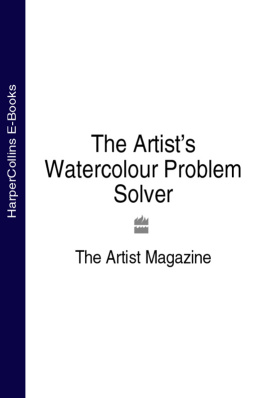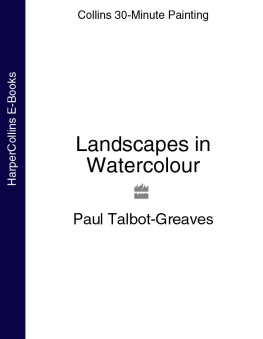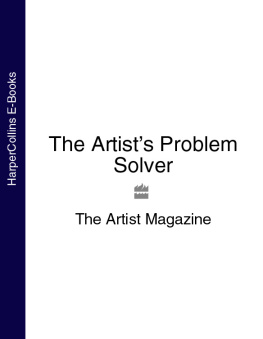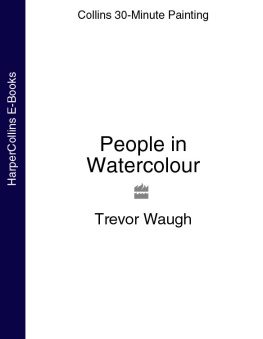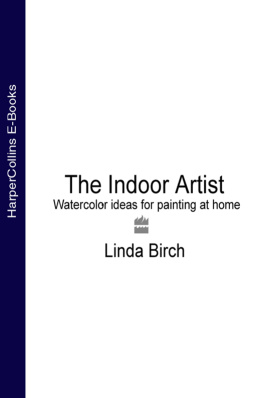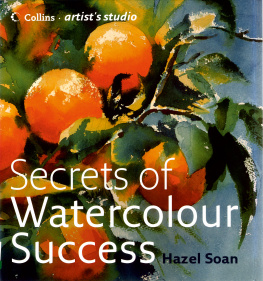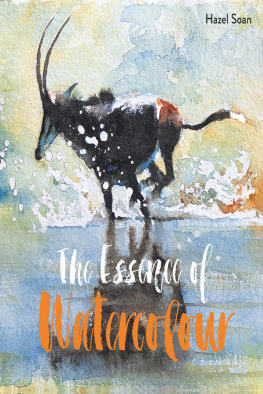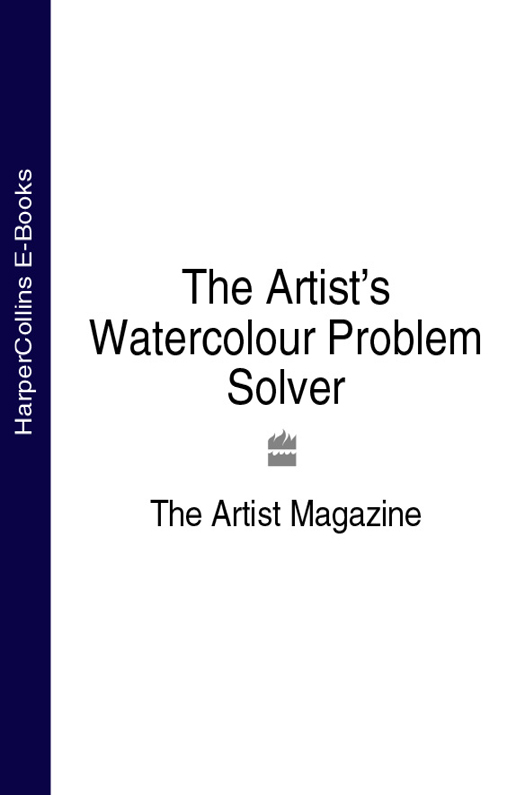CONTENTS
by Sally Bulgin (Publishing Editor, The Artist)
| John Lidzey |
| John Mitchell |
| Judi Whitton |
| Paul Riley |
| Ray Balkwill |
| Julie Collins |
| Anuk Naumann |
| Gerald Green |
| Tom Robb |
| Barry Herniman |
| John Lidzey |
| Tom Robb |
| Judi Whitton |
| Hilary Jackson |
| Anuk Naumann |
| Tom Robb |
| Sally Fisher |
| Judi Whitton |
| Paul Riley |
| Julie Collins |
| Barry Herniman |
| Gerald Green |
| Anuk Naumann |
| Judi Whitton |
Following the worldwide success and popularity of The Artists Problem Solver, first published in 2001 by HarperCollins from the long-running series in the UKs The Artist magazine, we decided to collaborate on this second publication, concentrating this time on the most helpful watercolour problem-solving articles from the magazine series.
As I mention in my introduction to the first book, the aim of the ongoing series on which this most recent book is based is to tackle painting enthusiasts most common problems by posing their questions to top-class artist-tutors, who offer advice and possible solutions to each problem through down-to-earth instruction and demonstrations.

Pears in the Studio
(Anuk Naumann)
20.5 20.5 cm (8 8 in)
In this latest publication, the problems covered are those encountered specifically by watercolourists, although you may find that the ideas are relevant to painting subject matter in other media too. Watercolour is a wonderfully expressive medium, offering endless opportunities for portraying subjects, but it can be unpredictable and you may need guidance to overcome sticking points and reach your full potential. Here you will find a myriad of different watercolour problems which cover topics ranging from finding inspiration, using your chosen colours to their greatest effect and working up pictures from sketchbooks, to creating impact through tone control and recognizing the point at which to stop work on a painting. The subjects covered are also numerous and feature landscapes, seascapes, interiors and still-life paintings, as well as nudes, flowers and fabrics amongst others. There is something of value to every painter, whatever their level of skill.

Venice (Judi Whitton)
25.5 33 cm (10 13 in)
Each of the questions posed has been tackled by well-known practising artist-tutors with empathy for students concerns and needs. These include John Lidzey, Paul Riley, Ray Balkwill, Tom Robb and Judi Whitton, who offer advice based on their own approach to the subject or problem in hand. The result is a cornucopia of information, advice and inspiration to encourage watercolour painters of all levels of experience.

Publishing Editor, The Artist
What shall I paint next? Can you suggest new subjects that will stimulate renewed inspiration?
Answered by:
John Lidzey
The problem of finding a subject to paint seems to affect many artists, while others appear to have no trouble at all. From my own early experience I know the frustration of wasting a morning in failing to find something worthwhile to paint. It might be seen, I suppose, as a condition that is similar to writers block.
LANDSCAPES
For those within reach of a park or the countryside a landscape is always a stimulating subject. But one problem that occurs with many landscapes, especially those painted in watercolour, is that the results can look unexciting. Quite a few that can be seen in local exhibitions are views painted at midday (or thereabouts) in mild sunny weather. In many cases the scenery lacks any real interest, often being just a panorama of trees and fields.

Houses by the Mere at Diss
15 47 cm (6 181/2 in)
Houses in trees can make a very good subject. A sketch like this can provide a satisfactory reference for a finished painting. When the weather became wet I completed the view from my car.
There are more interesting possibilities to be found in landscape subjects related to twenty-first-century agriculture. The technology of farming is changing. Heavy machinery of all sorts now does the work of many people. Although lacking the rustic charm of nineteenth-century farm equipment modern farming machinery offers challenging painting subjects.
For those who have no interest in the current farming scene, yet wish to produce interesting landscapes, there is always inspiration to be gained from making the weather a dominant feature. Working just from sketches made on the spot, it is possible to create paintings in the studio with an appearance of rain and wind. Some excellent techniques for depicting these effects are shown in Patricia Seligmans book Weather How to See It, How to Paint It (unfortunately out of print, though your local library may have a copy). You may also find Turners landscape work to be useful in this context. Try to see some of his watercolour paintings and sketches in Tate Britain at Millbank, London, or at least in reproduction in the many books on his art.

Liverpool Street Underground
18 17 cm (7 61/2 in)
Inspiration can even be found below ground. I kept this painting very loose, allowing the paint to run freely, dropping pure colour into wet washes; I further broke up the imagery by flicking colour onto the painting surface.
STREET SCENES
There is also great potential in urban scenes. A good way of working in cities is to make sketches and to take photographs. These can often make excellent references for finished paintings that can be produced in the studio or at home. Many years ago, when I lived in London, I spent many early mornings sketching in local streets from the comfort of my car, afterwards taking a photograph of the same subject to correct any infidelities of scale or perspective in my sketch.
While you are in the city with a camera see if you can use it in some of the less public spaces. Open-air cafs can make splendid subjects. Buses, trains and railway stations can be good to paint, too. Many cities have a river running through look at the possibility of photographing and sketching from a bridge. Beautiful effects can be obtained with the sun reflecting off the surface of the water. Additionally, you could try using your camera at dusk in the city you can capture some really magical urban scenes in the half-light. There can be a wonderful air of melancholy encapsulated in a lighted window with the curtains drawn just as dusk begins.
INTERIORS

